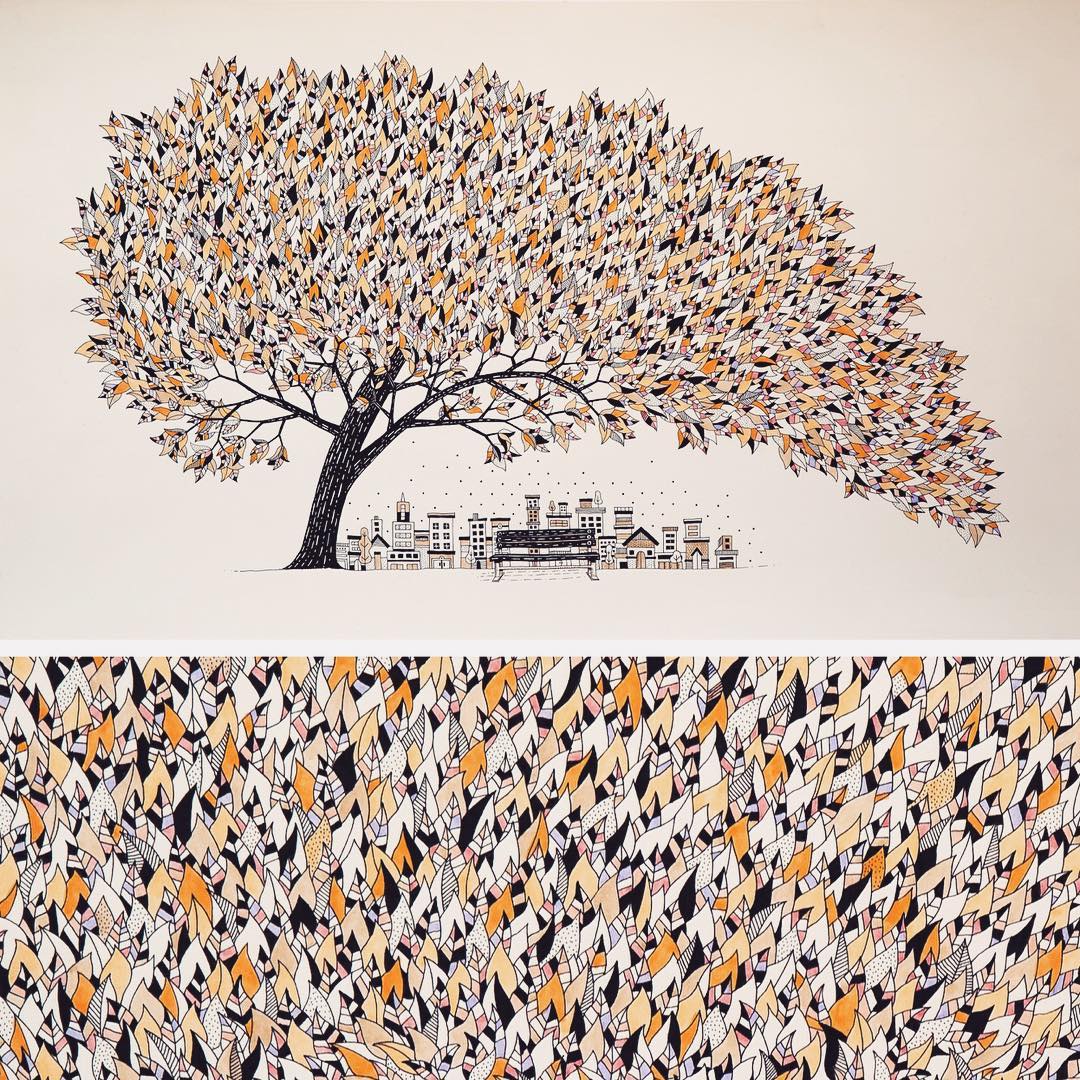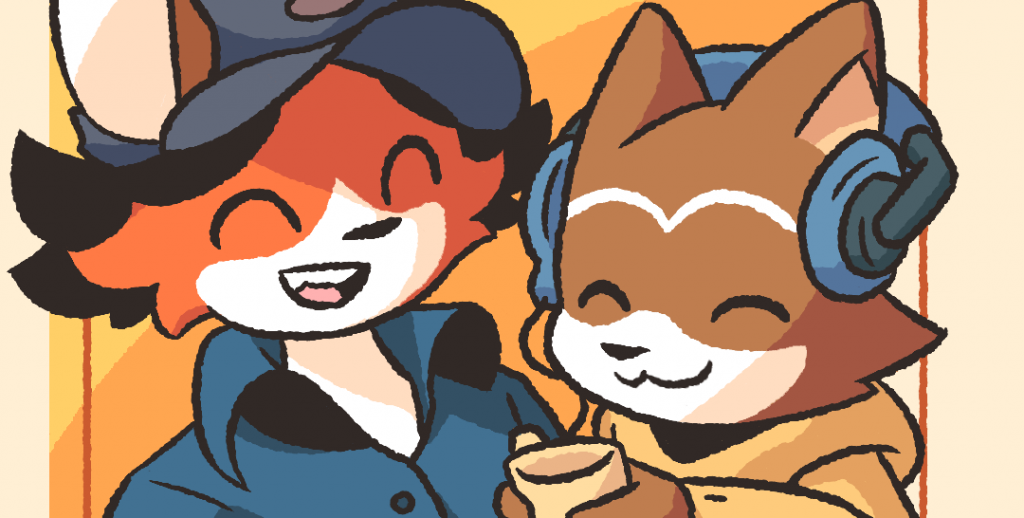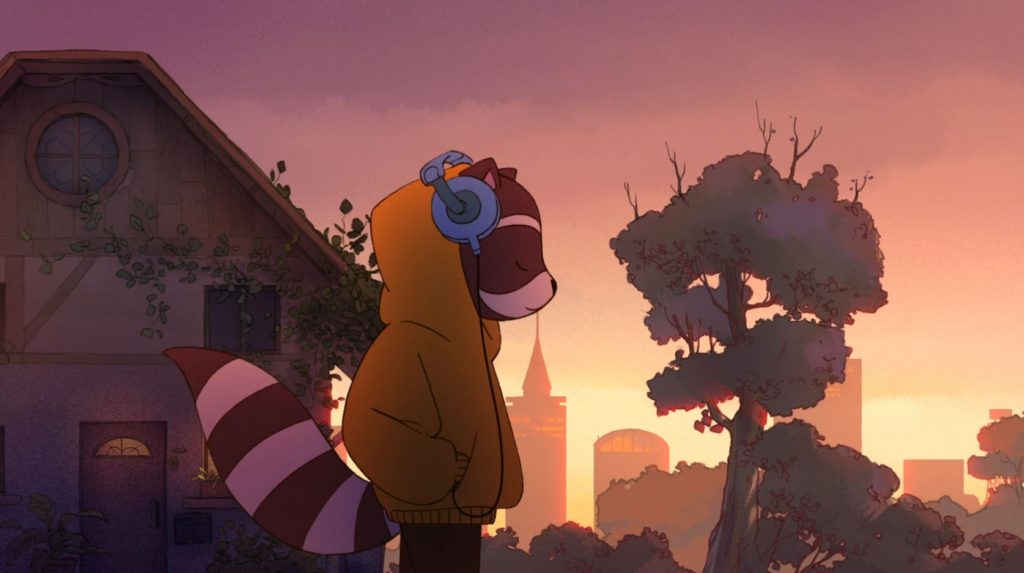Illustrator Mauro Martins is the first visual artist to be featured on Chillhop’s new editorial platform, and rightfully so: the Brazilian visionary has provided the imagery for our two most recent Chillhop compilation, Essentials Spring and Essentials Summer. The recently released 23 song Essentials Summer kickstarted our summer and has been soundtracking us through the season while Martins’ visual accompaniment has properly enhanced the experience. With both compilations (and two more later this year), he’s managed to offer up his signature style of intricate, highly detailed pieces full of relaxation and care-free vibes. Thankfully, Martins will continue to contribute artwork for our upcoming Essentials Fall and Winter (stay tuned). Because you will be seeing much more of Martins’ work throughout the year and because he is now part of the Chillhop family, we decided to help tell his story through an interview discussing his history, his craft, and how long his intricate creations take.
How long have you been taking your visual art seriously?
I’ve worked as Art Director on advertising agencies for about 13 years. But that was not exactly taking my own visual art seriously. The role was more about directing, conceptualizing campaigns, coming up with nice key visuals, etc. But in a way that I could respect the client’s corporate identity, or their communication style. I couldn’t just push my own style to the campaigns, obviously. At home, I’ve always made my illustrations for fun though. Having no clients, I could just draw whatever I wanted using my own visual language. So, how did that turning point from Art Director to self-employed illustrator happened? My last position in advertising was in Colorado, US. I was very excited to have an experience living abroad (I’m Brazilian). So I decided to document all my experience by making a visual diary. At the end of two years working there at CP+B, my diary was complete, covering the whole area of that big piece of paper. I quit my job on October 2015 and that was probably the moment that I started taking my visual art seriously. I sent my diary to more than a hundred websites and magazines. I ended up getting some cool press releases. After that, clients from all over the world started reaching me out asking for projects using my illustration style. This time, it was not me adapting my art to clients anymore, but those clients who like my visual style coming to me.

What’s your typical studio setup look like?
I currently work at home and I love it. There’s an office at my apartment where I have everything I need: a couch and a soft carpet. A window with nice views to a park. Sliding doors on two of the four walls, so I can integrate the office with my living room, balcony and kitchen. A table with a bunch of different kinds of pens. A good set of Macintosh, Wacom, Adobe softwares, and a camera. A regular printer/scanner. I love coffee. I drink twice a day. No sugar/sweetener. I like listening to instrumental music when I need extra focus. The vocals and lyrics are kinda distracting to me. When I’m doing something more simple that doesn’t requires much attention, then I go for some rock ’n’ roll or podcasts.
What has the process been like making the Essentials art for Chillhop?
First thing on my process is to understand the brand. In that case, by coincidence I knew Chillhop already. It’s a channel I listen to very often while working. There are good instrumental musics for my focus mode. So listening to Chillhop the whole time while illustrating for the Spring artwork was a no brainer. After understanding the client expectations, I spent some time brainstorming situations related to the Spring theme. One of my favourite illustration on that cover was the girl riding a bike with lots of flowers on the basket. The wind is blowing her hair and spreading the flowers all over the path. It just brought me a good feeling, very similar to the music’s vibe in my opinion.

Your pieces are super intricate and detailed. How long do you spend on any one particular piece?
It really gets time for me to make each of them. I’m not that kind of illustrator that knows exactly how to draw everything and is super fast. I actually draw the same thing several times until it gets in a good shape. I try to give it my own language and it’s not something that comes up easily. The Essentials Summer artwork for example, took me about 25 hours. Then I needed about more 5 hours for tweaks and getting final files ready.
Your Instagram page shows small prints, elephant sculptures, chef jackets, and massive murals. Do you have a preferred medium?
I don’t know if I prefer a specific one. What I like is actually this random aspect of my demands. I get really excited when a client reaches me out with a medium that I have never thought before. Sometimes I ask myself “what will be the next product I will work on?” It’s so fun that I can use my artwork in such a wide range of things. I’ve made projects for glasses in Italy, drink packaging in Germany, poster in Poland, mobile covers in US, credit cards for a bank, bike, fashion collection, cup for Amarula, murals, lots of packagings, pizza boxes, and much more.
Any medium that you haven’t attempted yet that you’d like to try? (skateboards comes to mind)
I tried illustrating on a skateboard before. It didn’t look good though. It was just one single try. I still have to try more until it gets cool. It’s probably a matter of finding the right scale and motif. One thing I’d love to do one day is a special edition of a beverage bottle. Hopefully a nice brand reaches out to me with this one. But you never know. Maybe my next assignment will be something even more exciting, something I haven’t even thought about yet.

Do you live in Brazil? What is the art scene like where you live?
Yes, I live in Brasilia, capital of Brazil. It’s a very young city (58 years). It was all planned out before it was built. And it was built to be the new capital. So things are developing a lot. It’s impressive how many talented people you can find around here and how the art scene is growing every year. Last year Brasilia joined the Unesco Creative Cities Network. That definitely happened for a reason.
You’re providing the artwork for the remainder of the Chillhop seasons. While Spring and Summer are already available, what can we expect from the upcoming Fall/Winter editions?
The four covers are a collection. So I’m making sure to make them all as part of the same thing. However, each cover have its own universe. The summer edition artwork is finished already and there are lots of fun stories going on within it. Hopefully the cover is as entertaining to look at as the songs are entertaining to listen to.
Outside of your own art, what have you been enjoying recently?
In Brasilia there’s a nice big gallery that brings lots of cool art exhibits. The last one I visited was Basquiat’s. Pretty cool. Made me go back home wanting to express myself through art in a more free way. The last book I read was Status Anxiety by Alain de Botton. Very good reading. It opened my mind about crazy things going on on our society these days. I’m currently watching the Money Heist series. I’ve been also very serious about exercises. Mostly yoga and street workout.
Do you have any advice for artists working on their craft?
Working on my own visual art is something still very new to me. So I feel like I’m still learning more than reaching conclusions that could be turned into advices, you know? But I’ve been definitely learning some new stuff on the way. One thing that comes to my mind is that finding your own style has to do more with researching yourself, the person who you are, than researching all the visual language possibilities. Self knowledge, when applied to your art, could be a powerful way to reach unique visuals.
Do you have any final thoughts, words of wisdom, shout-outs?
Some friends ask me for advices on how to leave their jobs and do what they like. I feel this is a big professional question these days. I don’t think there’s a formula for that. In my case, I’ve always worked hard on my side projects. Not to make it a profession, but for fun. Then it happened that one of my side projects turned into my current profession. Of course, it wasn’t about being lucky. I really spend lots of time figuring out how to make stuff happen.
I don’t think it has to be a process so sharpen like “I will quit my job and do what I love from now on.” To be honest, this is more courage than I have. And although things are good to me right now, we never know. Maybe I will have to reinvent myself again in the future. So I still keep thinking about fun side projects.


